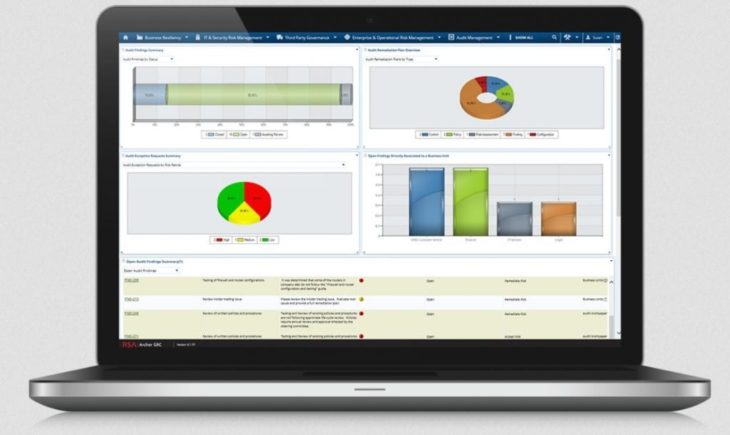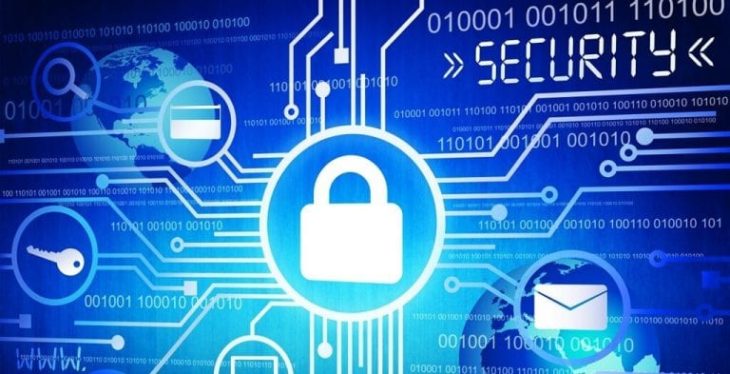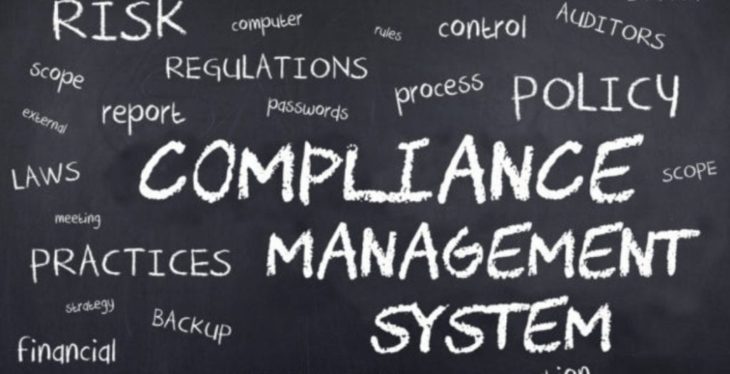It is important for organizations to integrate information security, which is both crucial from an operational and a legal standpoint today. Corporate organization do fear facing legal proceedings or fines (even if this fear is well-justified), but because of the way of people use of information technology. The value of information resources and artificial intelligence has certainly increased over the years as it has maintained repeatable and standardized operations. But IT resources also rely on a well-integrated compliance framework. Organizations are mainly dependent on IT resources to provide their employees a platform for doing business. As a result, control over risk, regulations, policies and confidential documentation is essential for any business to effectively conduct its business activities.

Source: rsa.com
The cyber security risks to any company’s valuable IT resources through vulnerable controls have become a dominant issue.Businesses organizations need to evolve in cyber security management and compliance management software solutions to meet with the latest safety practices. Information security compliance management programs must be able to meet with the different regulations such and policiessuch as Sarbanes – Oxley (SOX), Gramm – Leach – Bliley Act,(HIPAA), payment card
Industry-specific data security standards (PCI DSS) and many others. These standard regulations provide rules and recommendations for protecting the self-interests of the organization as well as the government as a whole. An effective and efficient well-organized Compliance Management Software will be able to provide up-to-date configurable options for both security and audit.
Source: 360factorsRecommendations for Establishing an Information-Based Compliance Management
The lack of information protection and control without a proper compliance management tool can lead to high financial risks not if not managed properly, it can also lead to some serious consequences.It can even disrupt commercial activities of the business or even the cause damage to the reputation of the brand. In some cases, as with HIPAA, the inability to achieve and maintain compliance with safety can lead to financial and legal sanctions.What is checked in a conformity test depends on its compliance guidelines. If an organization is a public or private company, what data does it have? How does it manage and transmits or stores sensitive financial information?
When properly managed, compliance information security standards can be maintained to strengthen the overall information security program of an organization. It can also proactively conduct risk related activities and integrate compliance efforts with all the information of an organization. The security program can save time and money, reduce complexity and help to create sustainable and long-term solutions for an organization’s information security challenges. Compliance with safety regulations for companies is better to define and achieve certain IT security goals and to remedy them for the threat of network attacks.
Source: SaalexITTo comply with security practices, enterprises must develop comprehensive information security compliance management programs to comply with multiple regulations, such as Sarbanes–Oxley (SOX), Gramm–Leach–Bliley Act, Health Insurance Portability and Accountability Act (HIPAA), Payment Card Industry Data Security Standards (PCI DSS), and many others. These regulatory standards prescribe recommendations for protecting. The information security leader should ensure the right stakeholders involved in the process—senior management support is essential for an information security GRC tools. Information security leader should use these various compliance mandates to get with senior leadership, who are often removed from day-to-day information security challenges and processes, to understand the compliance requirements and the organization’s security state of compliance against these requirements.
The information security compliance manager would be responsible for engaging management support, coordinating monitoring and assessment activities, and engaging key personnel or functional groups as part of the efforts to ensure all security functions, such as patching systems, security-log reviews, wireless network scans, internal/external vulnerability scans, and internal/external penetration tests are performed as required. Additionally, the information security compliance manager should be responsible for collecting, collating, and storing evidence to demonstrate security controls are operating effectively on a continuous basis. Although the compliance manager is not typically tasked with generating or organizing all of the evidence, the compliance manager would be responsible for making certain the evidence is prepared, indexed, and stored in a central repository for use during assessments or internal reviews.
Concerning Security and Protection of Data
A compliance management program includes a minimum set of preconfigurable requirements for privacy that can be applied with any data to store, process or transmit and transcribe important information. It can also analyze the information as per the existing programs, practices and processes for reviewing and re-evaluating information. It can also assign accessibility controls and securitymeasures even in very dynamic business environments. Some compliance management programs are integrated with AI tools to be able to understanddaily business operations of an organization.

Source: incyberdefense.com
The data collection process will review information security technical, operational, and risk management practices, processes, and procedures. Technical security reviews include asset management, configuration management, Deploy an Information Security Compliance Process 163 security management, as well as assessment of IT architecture, application, and network policies.
Organizations must also implement an information security feature in the compliance program with continuous monitoring and documentation of the implementation, effectiveness,the adequacy and status of all their security checks. These programs should bewell aligned with the business and safety objectives of the company. It should not distract changes within the organization, the operating environment and the implementation technology. The program must also provide sufficient evidence to demonstrate continued liability and safety requirements.The manager must ensure that the right stakeholders are involved in the process to view and analyze all business intelligence reports. The management should also be concerned about what IT support or any other compliance or security related feature is essential for it to be completely seamless. The management should also be able to use these different compliance requirements to cope with the emerging risks and challenges. Leaders who are often removed from resolving these challenges and processes are bound to fail at some point.To truly understand compliance management it requirements, it is first important to establish accessibility and security protocols of the organization in relation to the compliance management requirements.

Source: Mortgage Compliance Magazine
